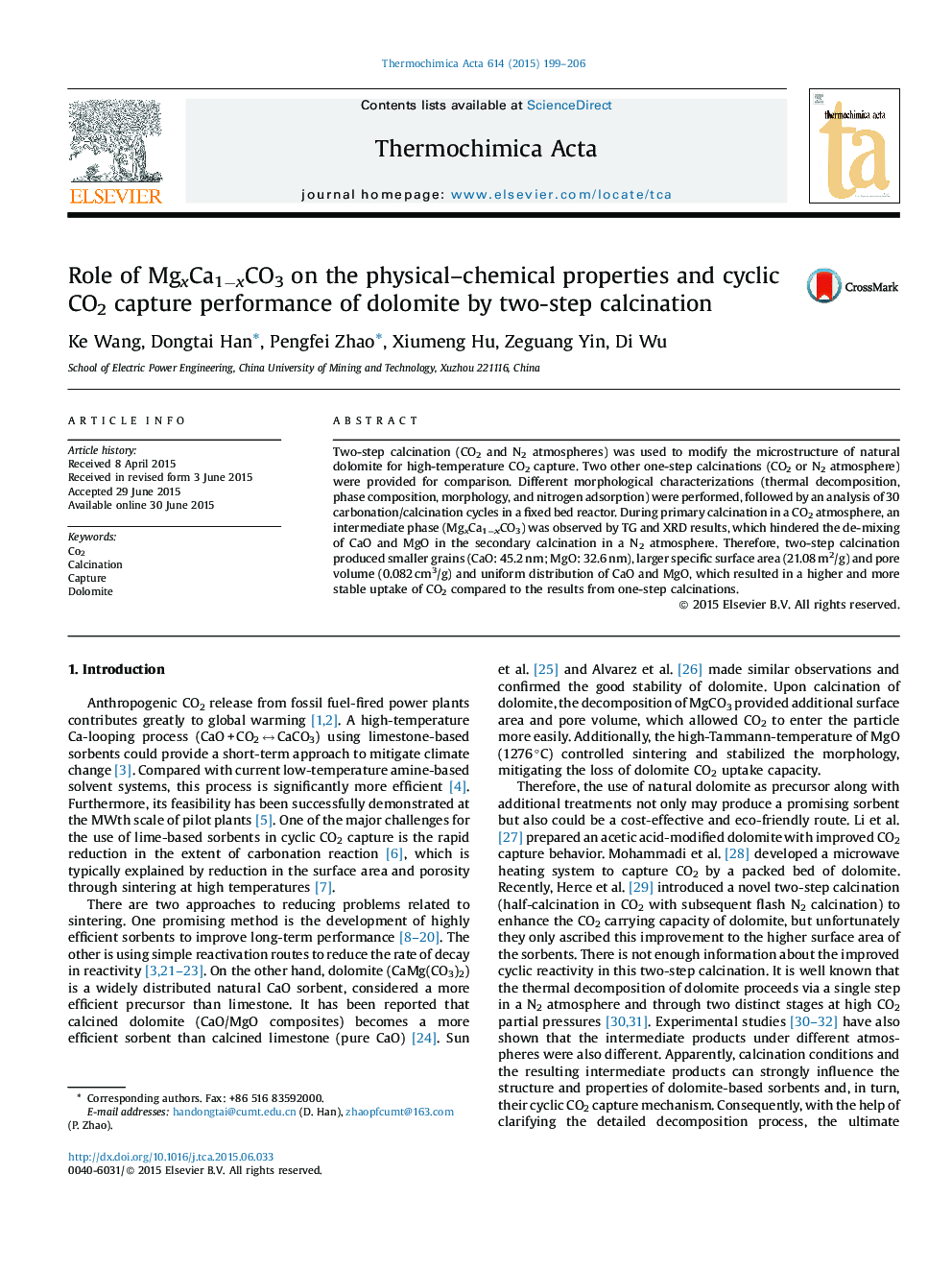| Article ID | Journal | Published Year | Pages | File Type |
|---|---|---|---|---|
| 673004 | Thermochimica Acta | 2015 | 8 Pages |
•Two-step calcination treated dolomite sorbent was prepared and characterized.•An intermediate phase (MgxCa1−xCO3) was observed by TG and XRD results.•Mg-calcite hindered the de-mixing of Ca and Mg.•Smaller grains, larger specific surface area and pore volume were obtained.•This favorable structure resulted in a high and stable CO2 capture performance.
Two-step calcination (CO2 and N2 atmospheres) was used to modify the microstructure of natural dolomite for high-temperature CO2 capture. Two other one-step calcinations (CO2 or N2 atmosphere) were provided for comparison. Different morphological characterizations (thermal decomposition, phase composition, morphology, and nitrogen adsorption) were performed, followed by an analysis of 30 carbonation/calcination cycles in a fixed bed reactor. During primary calcination in a CO2 atmosphere, an intermediate phase (MgxCa1−xCO3) was observed by TG and XRD results, which hindered the de-mixing of CaO and MgO in the secondary calcination in a N2 atmosphere. Therefore, two-step calcination produced smaller grains (CaO: 45.2 nm; MgO: 32.6 nm), larger specific surface area (21.08 m2/g) and pore volume (0.082 cm3/g) and uniform distribution of CaO and MgO, which resulted in a higher and more stable uptake of CO2 compared to the results from one-step calcinations.
